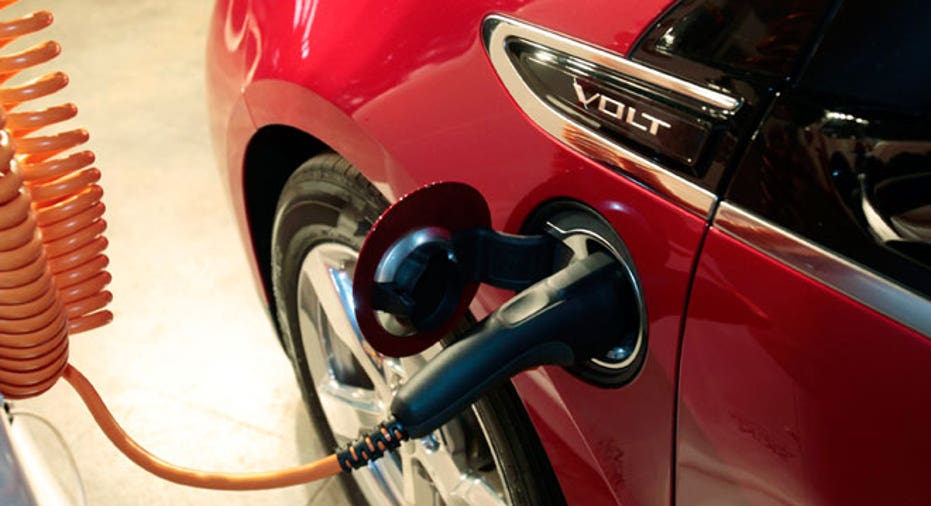General Motors Proposes Fix for Chevrolet Volt Fire Risk

General Motors Co said on Thursday it has developed a proposed fix to the battery pack for the Chevrolet Volt to eliminate the risk of a fire being triggered days after a crash.
GM said it would strengthen structural protection for the 400-pound lithium-ion battery in the Volt by adding steel reinforcements and take other steps to prevent coolant fluid from leaking and triggering a fire.
U.S. safety regulators indicated they were ready to sign off on the relatively quick repairs for the Volt, heading off a costly distraction for the top U.S. automaker and the prospect of a safety recall on its highest profile vehicle.
GM has made the Volt the symbol of its determination to seize a leadership position in fuel economy and green technology, and its engineers have been racing to respond to a safety investigation by U.S. regulators since late last year.
"This remains a halo vehicle for us in technology and design," Mark Reuss, GM's chief of North American operations, told reporters.
The National Highway Traffic Safety Administration opened a probe of the Volt's battery pack in November.
NHTSA, which has the power to review proposed safety fixes by automakers, said the changes to the battery pack developed by GM appear to protect the Volt from fires of the kind it found possible in its safety tests.
Reuss declined to comment on the cost of the Volt repairs.
Last month, as GM engineers zeroed in on the package of proposed fixes, a person with knowledge of the situation told Reuters the cost would be about $1,000 per Volt, or less than $9 million to fix the vehicles already on the road.
GM has maintained that the real-world safety of the Volt was never at risk. Executives repeated on Thursday that the automaker was confident in the safety of the lithium-ion cells supplied by Korea's LG Chem.
GM will notify Volt owners of the fixes in the coming days. Owners will be able to have Chevrolet dealerships conduct the needed repair work starting in February, the automaker said.
Each repair will take two to three hours to complete, Mark Reuss, GM's chief of North American operations, said. GM has built about 12,400 of the battery-powered Volts and sold about 8,000 of those.
A battery pack in a Volt that went through a crash test in May caught fire three weeks later at an NHTSA test facility.
In lab tests completed in late November, a second Volt pack began to smoke and throw off sparks while a third battery pack caught fire a week after a simulated crash.
In all of those cases, coolant leaked and came in contact with electronic circuits in the battery pack, causing delayed fires, GM engineers found.
By early December, a team of GM engineers had developed a package of proposed fixes to protect the Volt battery. GM then conducted four crash tests of the repair between Dec. 9 and Dec. 21 and found it held up as expected.
A day later, NHTSA ran a crash test of a Volt with the GM fixes in place. It showed that the battery compartment had not been damaged and that none of the coolant leaked, the agency said. "The preliminary results of the crash test indicate the remedy proposed by General Motors today should address the issue," NHTSA said.
Under the repairs, GM will add steel reinforcements to protect the Volt battery pack in the event of a severe side crash. It will also add a sensor to monitor coolant fluid levels and another bracket to keep the fluid from overflowing.
At one point, GM engineers had also considered laminating circuitry in the battery pack to protect it from contact with the coolant fluid, people with knowledge of the effort said.
The Volt's battery is designed to provide about 40 miles of electric-powered range. The plug-in hybrid also has a gasoline-powered 1.4-liter engine to provide additional driving range after the battery has been drawn down.
The plug-in hybrid costs $40,000 before a $7,500 federal tax credit.
About 250 Volt owners took GM up on the automaker's unusual offer to give them loaner vehicles during the repair campaign or even to buy back the plug-in if owners asked for that, Reuss said. (Additional reporting by Kevin Krolicki in Detroit and John Crawley in Washington; Editing by Gerald E. McCormick)